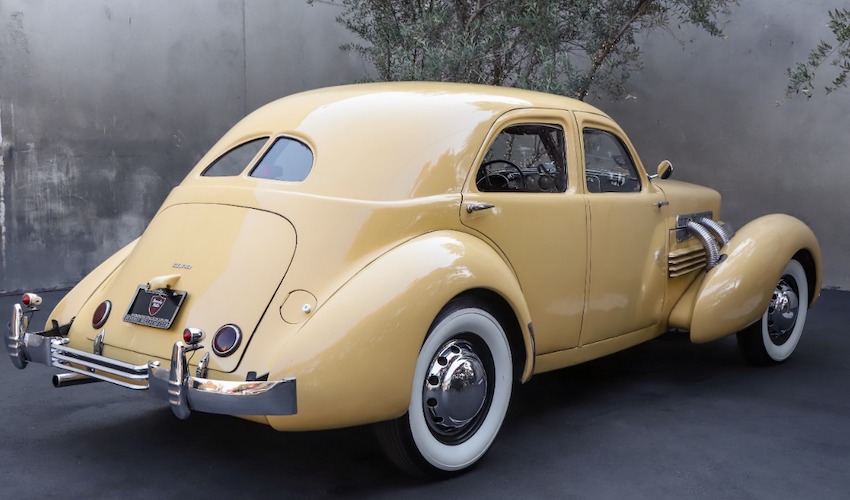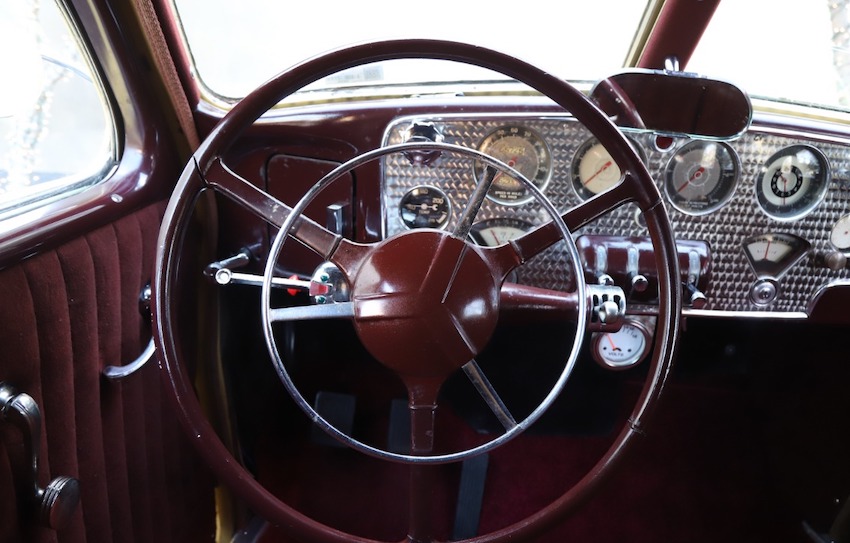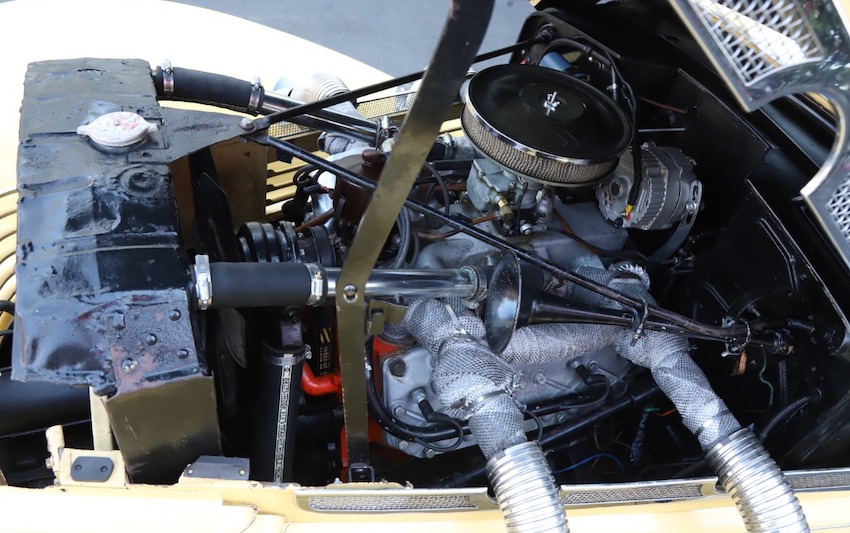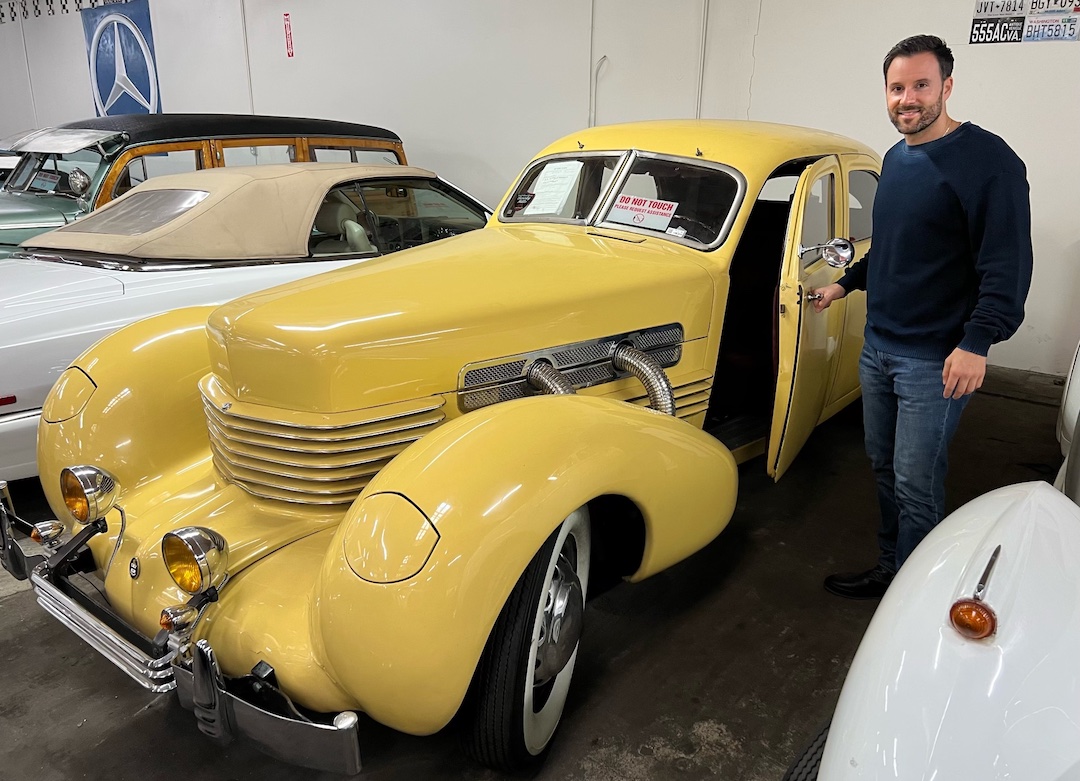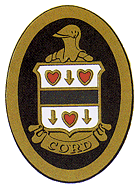Car Tales: Wondrous Beauty, 1936 Cord 810 Westchester Sedan

‘On his first acclaimed solo album GP, the late Gram Parsons celebrated in 1973 the wondrous beauty of Cord automobiles in his song The New Soft Shoe.
‘Aptly, as Parsons was as stylish an individual as Cord cars, which to this day resemble a science-fiction vision of American automobiles.
‘The Cord 810, and the later Cord 812, were luxury automobiles produced by the Cord Automobile division of the Auburn Automobile Company in 1936 and the 1937: the first American-designed and built front wheel drive car with independent front suspension. At Beverly Hills Car Club right now we have a beautiful 1936 Cord 810 Westchester Sedan in Light Yellow with a red interior.
‘The vehicle comes equipped with a 4-speed manual transmission, single carburetor, and desirable whitewall tires. This is an excellent weekend cruiser that is mechanically sound.
‘The Cord Corporation was founded and run by Errett Lobban ‘E.L.’ Cord as a holding company for his many transportation interests, including the Auburn Automobile Company. Cord was noted for its innovative technology and streamlined designs.
‘The 810/812’s are the best-known of the company’s products. Styled by Gordon M. Buehrig, they featured front-wheel drive and independent front suspension. Front drive enabled the car to be built so low as to render running boards unnecessary. Powered by a 4,739cc Lycoming V8, the 810 had a four-speed electrically selected semi-automatic transmission, and such innovative features as roll-up headlights.
‘Gordon M. Buehrig created some of the finest car designs the industry has ever produced including the regal Duesenberg Model J and the legendary Cord 810. Buehrig’s first design experience was at General Motors Art & Color Section, but he found creative freedom in 1929 when he was hired as chief body designer at Duesenberg Inc. In an atmosphere that permitted stylists to dream about line and form, then see their drawing-board ideas be put into production, Buehrig’s creativity flourished. He ushered in a new era in styling with designs that were instrumental in reshaping the automobile from its box-like carriage origins. Buehrig later saw many of his designs displayed at New York’s Museum of Modern Art in a 1951 exhibit of rolling sculpture. Reflecting on his career at age 79, Buehrig said, I have a little talent in art, I can’t sing, I can’t dance and I play a lousy game of golf. But to me, autos are works of art and I consider myself an artist in that respect. I’m a sculptor of car bodies.
‘The Cord 810 caused a sensation at the New York Auto Show in November 1935. Orders were taken at the show with Cord promising Christmas delivery, expecting production of 1,000 per month. Production delays pushed the expected delivery date to February 1936.
‘This still proved optimistic – the first production vehicles were actually delivered in April 1936. Cord managed to sell only 1,174 of the new 810 in its first year. The Cord 810 is well known for its flat front nose with a horizontal louvered grille design instead of the common radiator-style grille, that made its nose resemble a coffin, earning it the nickname of ‘Coffin Nose’.
‘E. L. Cord was an American business executive, considered a leader in United States transport during the early and middle 20th century. Born in Warrensburg, Missouri, Cord had been a race car driver, mechanic and car salesman before he was offered the opportunity to manage the dying Auburn Automobile Company in 1924. By 1928 he controlled Auburn, which by 1931 was the 13th largest seller of autos in the United States. During 1934, he moved to England, reportedly because of kidnapping threats. He moved back to the United States in 1936, and in 1937 he sold the Cord Corporation and retired to Los Angeles to earn even more millions in real estate. Cord owned several of the first radio and television stations in California and later Nevada, where he moved in the 1940s.
‘In Reno, Cord established KCRL-TV and radio in the 1950s and operated it for more than 25 years. The ‘CRL’ in the station’s call letters stood for “Circle L”—a ranch Cord owned in the Nevada desert.
‘In 1958 he was asked to run for governor of Nevada, but he declined. E.L. Cord died in Reno, Nevada, in 1974, aged 79.
-Alex Manos, Owner

Get Started!
Welcome!
join our inventory newsletter
Sign-up for our e-mail alerts
join our newsletter
Sign-up for our e-mail alerts
Learn More
or
we buy classic cars
Looking to sell yours?
Contact us
Sell us your car
Pick up from any USA location - Any condition - Top $$$ Paid




